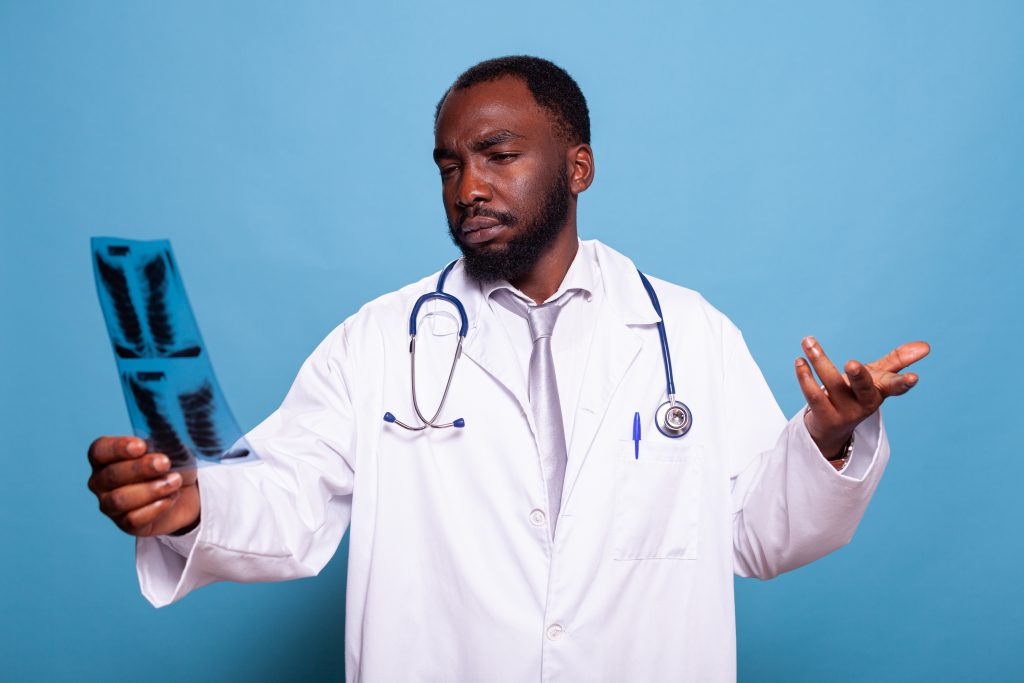A pulmonary embolism occurs when a clot from another part of the body (usually the leg or arm) travels through the bloodstream and lodges in the blood vessels of the lung.
PEs can cause heart or lung damage and even death if not treated quickly.
Signs / Symptoms
What's common signs of pulmonary embolism?
- Shortness of breath
- Pain with deep breathing
- Rapid breathing
- Increased heart rate
- Rapid or irregular heartbeat
- Lightheadedness or dizziness
- Excessive sweating
- Fever
- Leg pain or swelling, or both, usually in the calf caused by a deep vein thrombosis
- Clammy or discolored skin (cyanosis)
Common causes
What's common causes of pulmonary embolism?
It based on conditions when blood flow:
- Surgery
- Spinal cord injury
- Broken hip or leg
- Cancer
- Heart attack and heart failure
- Stroke
- Obesity
- Varicose veins
- Infections
- Sickle cell disease
- Being a woman that gave birth in last six weeks
- Being immobile for a month
- Travelling long distance
Departments & Emergency
If an individual has signs or symptoms it is recommended to seek emergent medical help such as call 9-1-1 or visit an Emergency Room.
Diagnosis
- Medical History
- Physical Examination
- Blood Test
- Imaging Test
- ECG
Treatment
- Medication
- Compression stockings
- Leg elevation
- Physical activity
- Pneumatic compression
- Drink plenty of fluids
- Take a break from sitting
- Fidget in your seat
- Wear support stockings
FAQ
What is the mortality rate of a pulmonary embolism?
Acute PE is associated with a significant mortality rate (as high as 30%), whereas the death rate of diagnosed and treated PE is 8%.
Who is at risk for pulmonary embolism?
- Have been inactive or immobile for long periods of time.
- Have certain inherited conditions, such as blood clotting disorders or factor V Leiden.
- Are having surgery or have broken a bone (the risk is higher weeks following a surgery or injury).
- Have cancer, a history of cancer, or are receiving chemotherapy.
- Being overweight or obese.
- Smoking cigarettes.
- Being pregnant or having given birth in the previous six weeks.
- Taking birth control pills (oral contraceptives) or hormone replacement therapy.
- Having diseases such as stroke, paralysis, chronic heart disease, or high blood pressure.
- Having had recent injury or trauma to a vein.
- Having had severe injuries, burns, or fractures of the hips or thigh bone.
References:
- Bĕlohlávek, J., Dytrych, V., & Linhart, A. (2013). Pulmonary embolism, part I: Epidemiology, risk factors and risk stratification, pathophysiology, clinical presentation, diagnosis and nonthrombotic pulmonary embolism. Experimental and clinical cardiology, 18(2), 129–138.
- National Heart, Lung and Blood Institiute. Venous Thromboembolism. Retrieved April 25, 2021, from https://www.nhlbi.nih.gov/health-topics/venous-thromboembolism
- Ouellette, D., R. (2020). Pulmonary Embolism (PE). Medscape. Retrieved April 25, 2021, from https://emedicine.medscape.com/article/300901-overview
- National Health Service. (2020, April 22). Pulmonary embolism. Retrieved April 25, 2021, from https://www.nhs.uk/conditions/pulmonary-embolism/
- Mayo Clinic. (2020, June 13). Pulmonary embolism. Retrieved April 25, 2021, from https://www.mayoclinic.org/diseases-conditions/pulmonary-embolism/symptoms-causes/syc-20354647#:~:text=Pulmonary%20embolism%20is%20a%20blockage,body%20(deep%20vein%20thrombosis).
- Cleveland Clinic. (2019, February 26). Pulmonary Embolism. Retrieved April 25, 2021, from https://my.clevelandclinic.org/health/diseases/17400-pulmonary-embolism
[INSERT_ELEMENTOR id="14481"]



